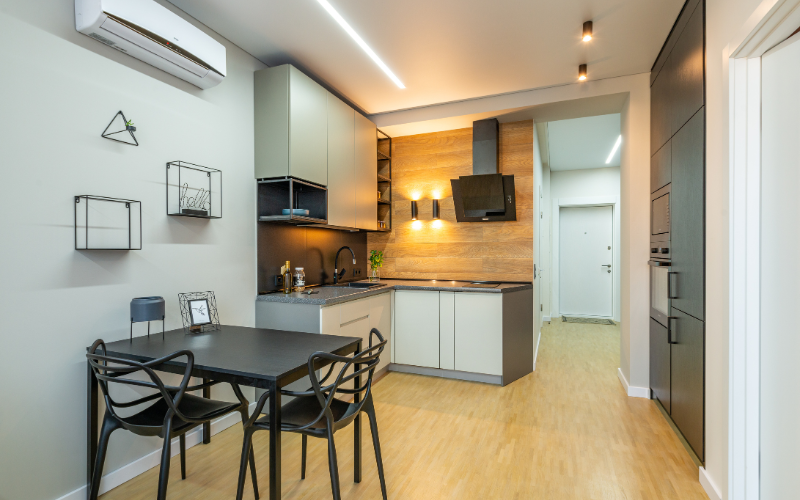Apartment turnovers are a critical aspect of property management, affecting both landlords and tenants. Understanding the time it takes to turn over an apartment is essential for minimizing vacancy periods and ensuring a smooth transition between tenants. This comprehensive guide by NSPIRE Experts delves into the factors influencing turnover time, the typical processes involved, and tips for streamlining the turnover process.
Factors Affecting Turnover Time
Size of the Apartment The size of the apartment plays a significant role in determining turnover time. A studio or one-bedroom apartment typically requires less time to prepare compared to a multi-bedroom unit. Smaller spaces usually mean fewer repairs, less cleaning, and quicker overall preparation.
Condition of the Apartment The condition of the apartment at move-out can vary greatly. Normal wear and tear may only necessitate minor repairs and touch-ups, whereas extensive damage could require major renovations, significantly extending the turnover period.
Availability of Maintenance Staff The efficiency and availability of maintenance staff are crucial. In-house maintenance teams can often respond more quickly than outsourced services, reducing the turnover time. However, during peak moving seasons, even in-house teams can experience delays.
Local Regulations and Requirements Local regulations and inspection requirements can also impact the turnover timeline. Some jurisdictions require specific inspections or compliance checks before a new tenant can move in, adding to the overall turnover time.
Typical Turnover Timeframes
Short Turnovers (1-2 weeks) Apartments requiring minimal repairs and cleaning can often be turned over within one to two weeks. This timeframe typically applies to units that have been well-maintained and only need minor touch-ups.

Moderate Turnovers (2-4 weeks) Standard turnovers, which include necessary repairs, painting, and thorough cleaning, usually take two to four weeks. This timeframe allows for addressing common issues such as wall repairs, fixture replacements, and deep cleaning.
Extended Turnovers (4+ weeks) For apartments needing major renovations or structural repairs, the turnover process can extend beyond four weeks. These extended turnovers might involve significant plumbing or electrical work, flooring replacement, or other substantial upgrades.
Step-by-Step Turnover Process
- Inspection and Assessment The turnover process begins with a thorough inspection of the apartment. Property managers or maintenance staff walk through the unit, documenting any damage, wear and tear, or items requiring repair.
- Repairs and Maintenance Based on the inspection, necessary repairs and maintenance tasks are scheduled. This can include plumbing and electrical fixes, structural repairs, and any other maintenance work required to restore the apartment to a rentable condition.
- Cleaning A deep cleaning of the apartment is essential to ensure it is move-in ready for the next tenant. This includes cleaning all surfaces, carpets, appliances, and any other areas that require attention.
- Painting and Cosmetic Touch-ups Painting walls and making cosmetic touch-ups to fixtures and finishes can significantly improve the apartment’s appearance. Fresh paint and well-maintained fixtures create a welcoming environment for new tenants.
- Final Inspection and Approval After all repairs and cleaning are completed, a final inspection is conducted to ensure the apartment is ready for occupancy. This inspection verifies that all work has been done correctly and that the unit meets all standards for new tenants.
Tips for Reducing Turnover Time
Regular Maintenance Implementing a routine maintenance schedule can prevent many issues from arising, reducing the need for extensive repairs during turnover. Regular checks and minor fixes can keep apartments in better condition.
Efficient Coordination Effective communication and scheduling with contractors and maintenance staff can streamline the turnover process. Ensuring all parties are aware of their responsibilities and deadlines can help reduce delays.
Streamlining Processes Standardizing procedures for common turnover tasks can also expedite the process. Having a set checklist for inspections, repairs, and cleaning ensures nothing is overlooked and everything is completed efficiently.
Costs Associated with Apartment Turnovers
Direct Costs Direct costs include expenses for repairs, maintenance, and cleaning. These costs can vary widely depending on the extent of work required.

Indirect Costs Indirect costs involve the loss of rental income during the vacancy period. Minimizing turnover time is crucial for reducing these indirect costs and maximizing profitability.
Key Points to Highlight
- A well-planned turnover process is essential for minimizing vacancy periods and maintaining profitability.
- Detailed inspections, efficient repairs, and thorough cleaning are critical components of a successful turnover.
- Regular maintenance and effective coordination can significantly reduce turnover time and associated costs.
- Balancing speed and quality of work is crucial to ensure apartments are move-in ready for new tenants.
Frequently Asked Questions (FAQs)
How long does a typical apartment turnover take?
The typical turnover time varies based on factors like the apartment’s size, condition, and required repairs. Generally, it ranges from one to four weeks.
What factors can extend the turnover time?
Extensive damage, major repairs, and delays in maintenance or contractor availability can all extend the turnover period.
Are there ways to reduce the costs associated with turnovers?
Implementing regular maintenance schedules and streamlining turnover processes can help reduce both direct and indirect costs.
What should be included in a turnover checklist? A comprehensive turnover checklist should include inspection and assessment, necessary repairs and maintenance, cleaning, painting and touch-ups, and a final inspection.
Typical Turnover Timeframes
| Turnover Type | Timeframe | Description |
|---|---|---|
| Short Turnovers | 1-2 weeks | Minimal repairs and cleaning |
| Moderate Turnovers | 2-4 weeks | Standard repairs, painting, and cleaning |
| Extended Turnovers | 4+ weeks | Major renovations or structural repairs |
Conclusion
Apartment turnover is a multifaceted process that requires careful planning and execution to minimize vacancy periods and ensure tenant satisfaction. By understanding the factors that influence turnover time and implementing strategies to streamline the process, property managers can effectively manage turnovers and maintain profitability. For expert guidance and support in apartment turnover and property management, contact NSPIRE Experts to deliver exceptional service and results.
